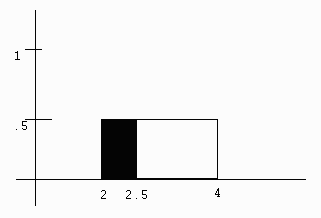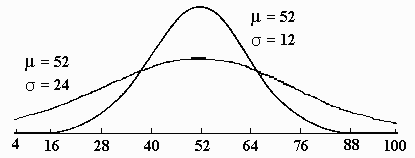Continuous Probability Distributions and the Normal Distribution
Probability Distributions For Continuous Random Variables
y = f(x) is called a probability density function if
-
f(x) is greater than or equal to 0 for all x.
-
The total area under the curve is 1.
-
The P(a < x < b) is the area under the curve between a and b.
Example The Uniform Distribution
Suppose that
![]()
then
P(2 < x < 2.5) = 0 .25

Example
Suppose that you throw a dart blindly at a number line until you hit a number between -1 and 1. What is the probability that you hit 0 exactly?
Answer: 0 since that area of a line segment is always 0.
Note: It does not matter whether you include the endpoints when you are looking at probabilities.
If the standard deviation is small then the distribution curve will have most of its area centered near the mean, while if the standard deviation is large the area will be more spread out.

Back to the Probability Home Page
Back to the Elementary Statistics (Math 201) Home Page
Back to the Math Department Home Page
e-mail Questions and Suggestions